Hope and fear in Kachin State as vote draws near
by Sebastian Strangio on Nov 10, 2015 • 10:03 am No Comments-
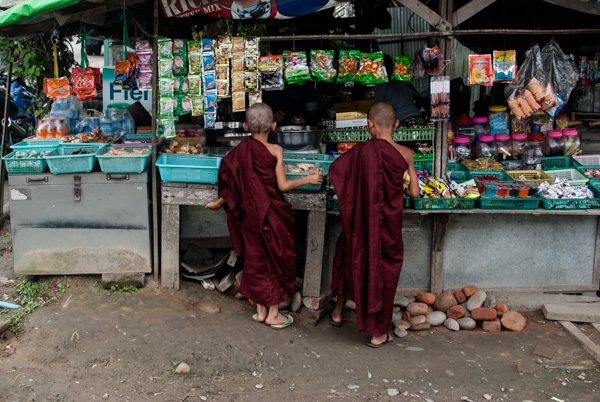
 Novice monks at a grocery store in central Myitkyina, the capital of Kachin State.
Novice monks at a grocery store in central Myitkyina, the capital of Kachin State.
-
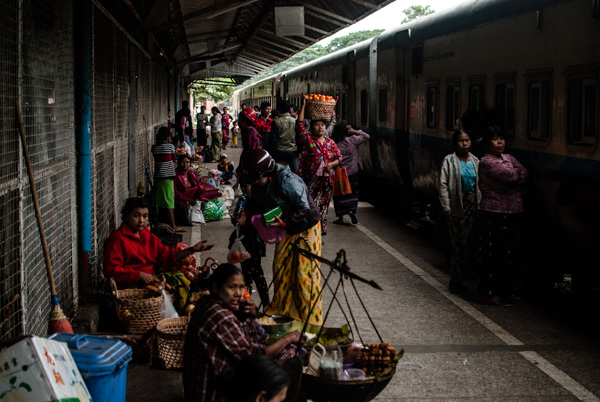
 The train station in Myitkyina, the capital of Kachin State.
The train station in Myitkyina, the capital of Kachin State.
-
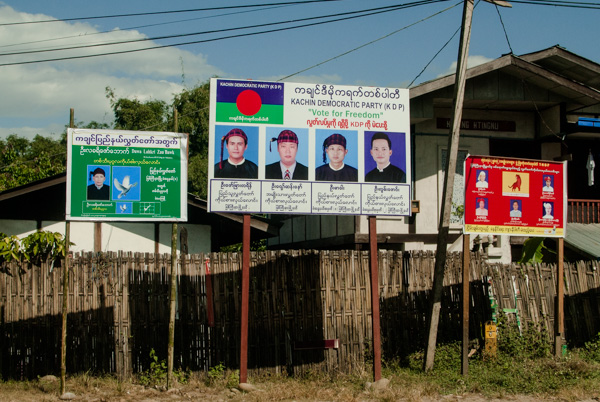
 Campaign posters in central Myitkyina.
Campaign posters in central Myitkyina.
-
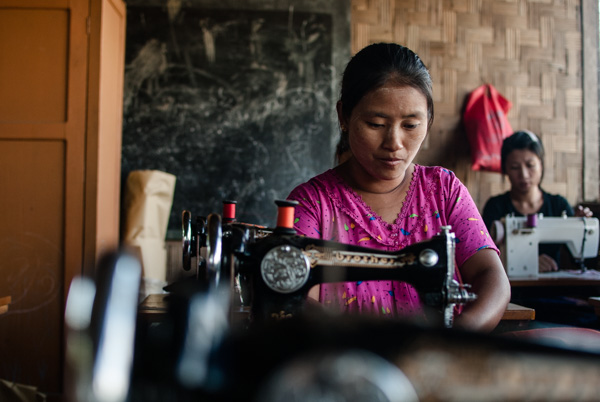
 A woman sews at a vocational training center at the Zi Un IDP camp on the outskirts of Myitkyina.
A woman sews at a vocational training center at the Zi Un IDP camp on the outskirts of Myitkyina.
-
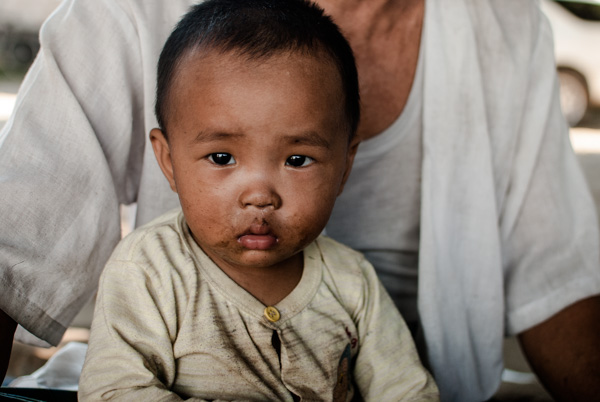
 A child at the Zi Un IDP camp, home to 760 people displaced by the Kachin conflict since 2011.
A child at the Zi Un IDP camp, home to 760 people displaced by the Kachin conflict since 2011.
-
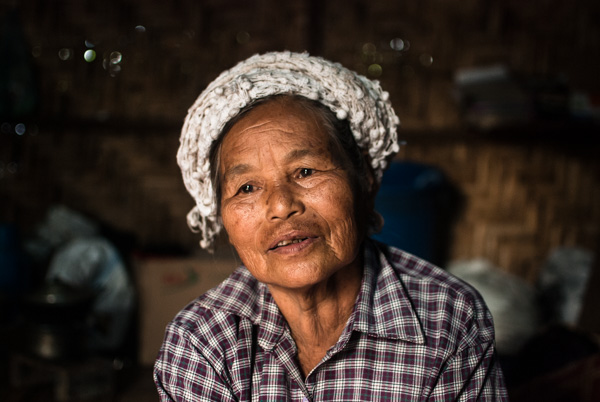
 Agrawng Bu, 62, a resident at the Tatkone IDP camp outside Myitkyina, was forced to flee her home in northern of Kachin State in 2012.
Agrawng Bu, 62, a resident at the Tatkone IDP camp outside Myitkyina, was forced to flee her home in northern of Kachin State in 2012.
-
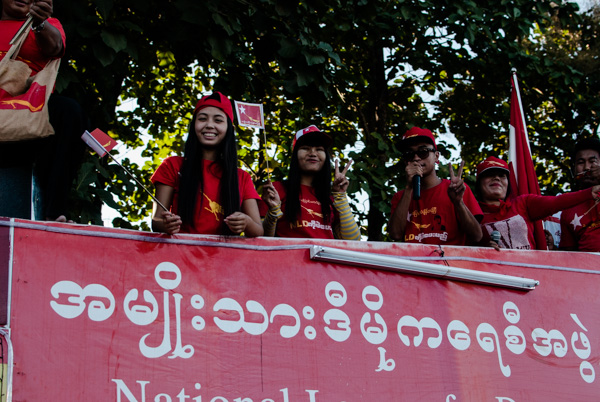
 NLD supports campaign though the center of Myitkyina on November 3, 2015.
NLD supports campaign though the center of Myitkyina on November 3, 2015.
-
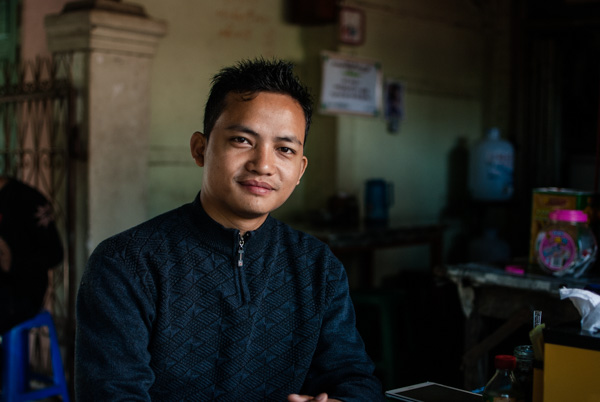
 Lum Zawng, 26, a state parliamentary candidate for the Kachin Democratic Party (KDP).
Lum Zawng, 26, a state parliamentary candidate for the Kachin Democratic Party (KDP).
MYITKYINA, Myanmar — Four years after being driven away by the military, Dagaw Hpung is finally letting himself dream of going home. On Nov. 8, when the country heads to the polls for a long-awaited election, he will be casting his vote for a new government — one he hopes will help end the conflict which has raged between the military and the Kachin Independence Army since 2011.
“I expect that something will change at this election — real change,” said Dagaw, a wiry 61-year-old in a bright blue longyi, traditional Burmese garb not unlike a sarong.
Dagaw and his three children fled their home in August 2011, when the army descended on their village in northern Kachin State and burnt villagers’ homes. After a week on the road, they eventually arrived at the Tatpone camp, a dusty settlement of 340 displaced people outside the state capital Myitkyina.
Like many others across Myanmar, Dagaw hopes that Aung San Suu Kyi, the world-famous leader of the country’s largest opposition party, the National League for Democracy, can help end the war in Kachin. “If the NLD wins, I believe that the coming election will help support peace,” Dagaw said, as barefooted children played nearby in the dust. “If the election brings peace, then we will be able to go home.”
The mostly Christian Kachin number around 1.5 million out of a national population of 51.5 million. The November election, Myanmar’s first free national ballot since 1990, has stirred both hopes and skepticism in this conflict-torn northern state. When fighting between the KIA and the military broke out, it shattered a 17-year ceasefire. Since then, the conflict has displaced around 120,000 people, who remain scattered across the region in makeshift camps for “internally displaced persons,” or IDPs.
In many areas, the election looms as a two-horse race between the military-backed ruling Union Solidarity and Development Party and Suu Kyi’s NLD. But the political terrain in Kachin and other ethnic minority states is fractured and complex, highlighting the depth of the ethnic conflicts which have wracked Myanmar since its independence from Britain in 1948.
“Inequitable distribution of political and economic rights has long driven mistrust and conflict in Myanmar,” the Transnational Institute, an Amsterdam-based research and advocacy group, wrote in a September briefing on ethnic politics.
In Myitkyina, a green low-slung city of 350,000 spread along the banks of the Irrawaddy River, the final week of election campaigning was peaceful. Campaign posters were plastered along the shady thoroughfares. Trucks festooned with colorful banners occasionally passed through the center of town, blaring campaign songs.
Outside town, however, the tension is palpable. While the KIA has pledged not to disrupt voting on Nov. 8, it has also refused to sign the heralded “nationwide” ceasefire agreement signed on Oct. 15 between the government and eight other ethnic armed groups. After outbreaks of fighting in parts of Kachin in September and October, the Union Election Commission announced that voting would be cancelled in more than 200 village tracts, compared with just 68 at the 2010 election.
Not everyone shares Dagaw Hpung’s optimism that Sunday’s election will change this situation. “The current government lies all the time. I don’t trust them,” said Ze Naw, 39, who was chased from her home by the Tatmadaw in mid-2011.
Sitting outside her thatched hut in the Zi Un IDP camp, a well-ordered limbo for some 760 souls on the edge of Myitkyina, one of 66 camps run by the Kachin Baptist Convention, she said she had given up hopes of any quick change. “The reality is that military forces are still in the fields. I don’t believe the election can stop the war,” she said.
Lum Zawng, a lawyer standing as a candidate for the Kachin Democratic Party, said this is a common attitude in remote areas, where people lack information on the voting process and have been worn down by years of conflict. “They aren’t interested in the election,” said the 26-year-old, the youngest of 13 candidates competing for a state parliament seat in Myitkyina. “They are paying attention, but there’s a little bit of doubt.”
Many, like Dagaw Hpung, seem to be hoping that Aung San Suu Kyi can deliver them from their suffering. When “the Lady” made a rare swing through Kachin in early October, thousands turned out to hear her speak, despite her long silence on the conflict in Kachin.
“Let me tell all of you that the NLD is for all the ethnic people in the Union. It is not a Bama party, by Bama people,” she said to a crowd in Myitkyina on Oct. 2, referring to the country’s ethnic Burman majority.
But Suu Kyi faces stiff competition from a raft of ethnic Kachin parties competing in the election for the first time. In pole position is the rebel-turned-politician Tu Ja, a former vice-president of the Kachin Independence Organization — the KIA’s political wing — who decamped in 2009 and founded the Kachin State Democracy Party.
Tu Ja’s party is running 55 candidates in the election, on a platform to “develop our region and to build national reconciliation.” He expects most Kachin to vote for Kachin parties, and that many people were disillusioned by the NLD’s stubborn silence about the KIA conflict, especially when serious fighting erupted in 2012 and 2013.
“They don’t understand much about the nationalities, the feeling of the nationalities. This is the main problem for them,” he told the Nikkei Asian Review in an interview at his home in Myitkyina.
The KDP, meanwhile, is running 32 candidates for the union and state parliaments, calling for a federal union, an end to the controversial Myitsone dam project on the Irrawaddy, and greater Kachin control over the region’s lucrative jade and timber resources. “Ethnic people want peace, genuine peace, and they want self-determination… We have very rich natural resources, but we are very poor,” Lum Zawng said. He expects about half the party’s candidates to win seats.
But the Kachin parties, like those in other ethnic states, face a serious problem: there are too many of them. After aborted attempts to form a united Kachin party, four separate parties will be trying to woo voters on Nov. 8, potentially cannibalizing votes.
Kachin parties say they are further disadvantaged by alleged voter list errors — Tu Ja said that up to 30% of those displaced by the fighting are absent from lists. Of 283 eligible voters at the Zi Un IDP camp, only 207 were on the most recent voter lists, according to staff. The vote cancellations are also likely to fall hardest on the ethnic parties, who draw most of their support from rural areas. According to Tu Ja, the election “can be free, but it cannot be 100% fair.”
The KIO, meanwhile, maintains that true ethnic self-determination is not possible without serious changes to the current, military-drafted constitution, which reserves a quarter of the seats in parliament for handpicked military delegates. “This election cannot solve our political conflict,” said Dau Hka, a spokesman for the KIO’s technical advisory team in Myitkyina. “All the ethnic people, including the armed struggle groups, they are seeking a genuine federal union system — that is the baseline. Not just democracy.”
Others take a more optimistic approach. Gun Mai, a project manager at the Shalom Foundation, which provides aid to thousands of people displaced by the conflict, said the current election will be a great improvement on the last, much-criticized national poll, when Kachin parties were barred from taking part. “This election will not be a solution for the conflict,” he said, “but we believe it can be part of the solution.”
At the Zi Un IDP camp, 46-year-old Bawm Myaw finds herself torn between cautious hope and well-worn skepticism. She remembers the night in June 2011 when she was forced to flee her home in Waingmaw township. “The fighting started at 2am, while we were sleeping,” she said. “I’d never heard that kind of gunfire. We left the house and took nothing with us, just ourselves. For a week we fled through the jungle.”
Now, as she prepares to vote in an election for the first time, Bawm Myaw is a little confused. All the parties promise change; all promise peace. But who can deliver it? “The reality is that the fighting continues,” she said. “I don’t know what will happen. Everything is in God’s hands.”
Published by Nikkei Asian Review, November 4, 2015.



